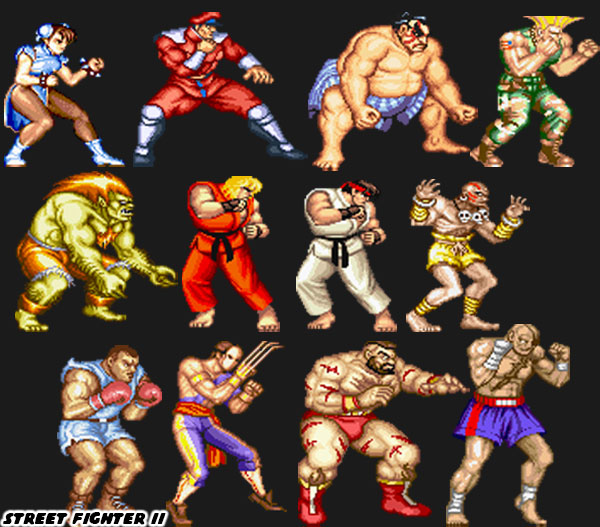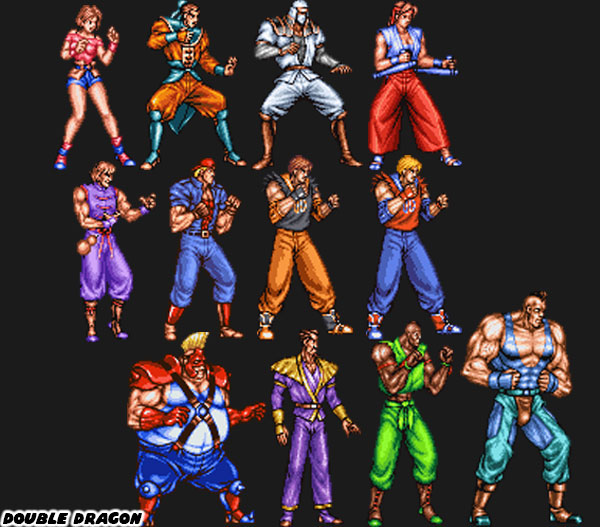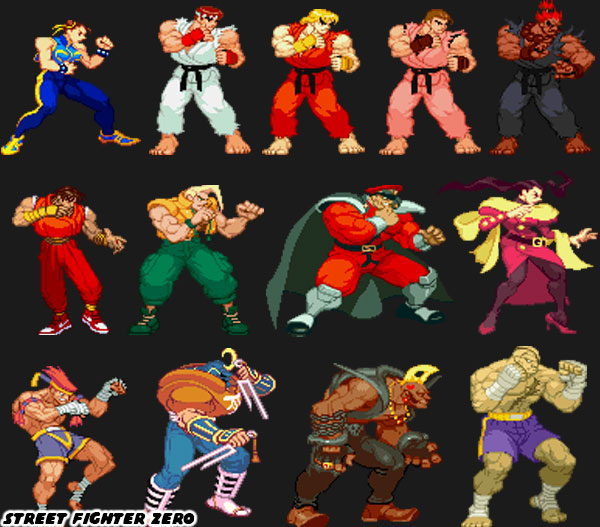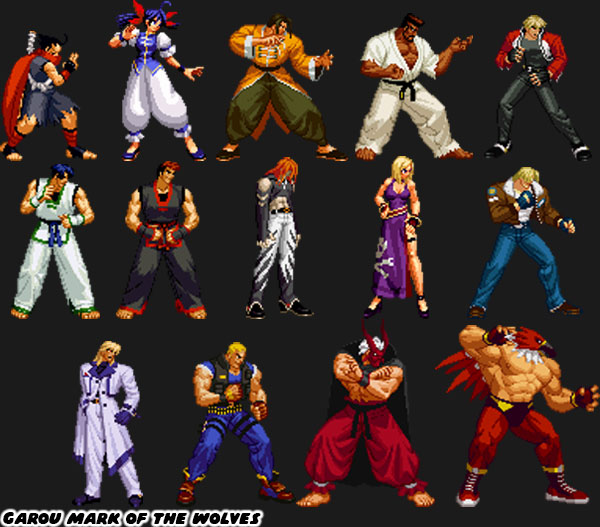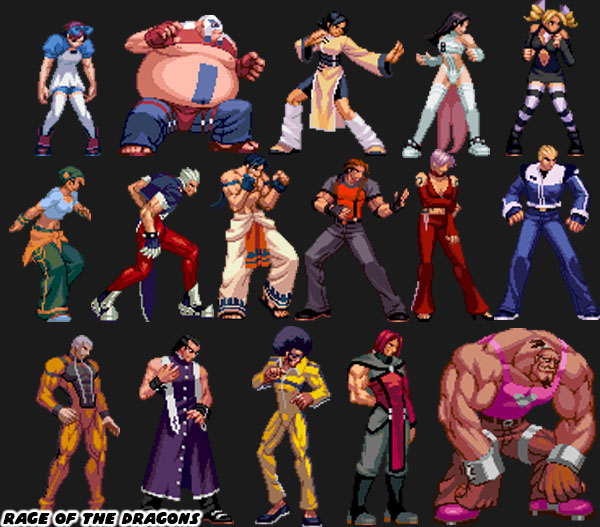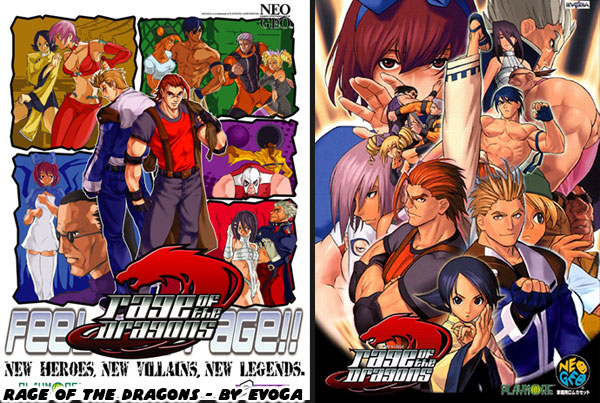The EVO tournament in Japan at the end of April 2024 had a few gems announced. I talked a little bit about
Fatal Fury City of the Wolves not too long ago. There were a couple of other announcements by
EXA-Arcadia that surprised me. In case you weren’t familiar with the company, they created arcade boards mostly on fighting games. They handled mostly small indy studio releases, and not big titles like those from Capcom, or SNK. Even though arcades weren’t as big as they were in the ‘80s, and ’90s there was still a market for them, and EXA-Arcadia was filling it. They said that they were working on getting
The Fallen Angels Revenge (Directors Cut) exclusively for the arcades.

Daraku Tenchi: The Fallen Angels (1998) was one of the most important fighting games of all-time, not for what was delivered, but for how ambitious it was. Developers Steel Hearts spent three years, and untold amounts of money trying to make the highest quality sprite based game ever made. It was going to be even visually more impressive than Street Fighter III, and superior to the work that went into
SNK’s Dot graphics for KOF XII. I wrote a two-part blog detailing the game.
The Fallen Angels, part 1 and
The Fallen Angels, part 2. Sadly the game published by Psikyo lacked polish, and balance. It was embraced not too long ago by the fighting game community when ROMS turned up for emulators. The idea that the directors wanted to finish their masterpiece after a 26 year pause was nothing short of inspiring. That wasn’t the only bomb dropped at EVO.

Rage of the Dragons W was slated to be a rerelease of a rare arcade fighter. I had never done a deep dive on the game for this blog, but I did point out several characters in various posts.
I wrote a little bit about Pepe, and Pupa as part of the history of Capoeira in fighting games.
I talked about Jae-Mo Kang when looking at fat fighting game characters. I talked about
Abubo Rao when talking about the origins of giants in fighting games. Lastly
Mr. Jones was mentioned as being a caricature of Back martial arts movie stars like Jim Kelly, and Ron Van Clief. In order to understand the importance of Rage of the Dragons in the history of fighting games then we have to put it in context. Rage of the Dragons was a fighting game homage to Double Dragon, the foundation of the brawling genre.
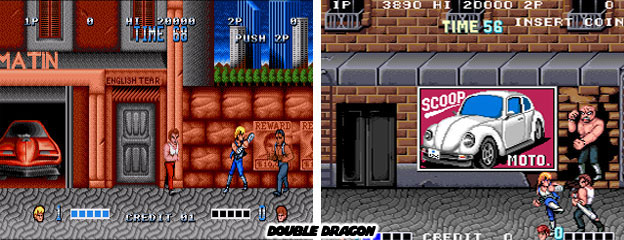
I cannot understate how important Double Dragon was to the history of brawlers, as well as fighting games.
The template for Double Dragon was Nekketsu Kouha Kuniou-Kun aka Renegade by Technōs of Japan. That and
Takashi Nishiyama of Irem / Capcom / SNK / DIMPS deserved all of the flowers. They put brawlers, and fighting games on the map.
There would be no Final Fight, or Street Fighter II if Double Dragon had not been a massive hit. A fighting game with a storytelling narrative was revolutionary at the time. We wouldn’t have the modern gems like Tekken 8, Street Fighter 6, or Mortal Kombat 1 if not for the seeds that Technōs planted in 1986. Unfortunately for them they didn’t understand how game sequels needed to evolve. They
retreaded the same ground with Double Dragon II, and III, which were stale when compared to Final Fight. When fighting games were taking off in the early ‘90s Technōs decided to stage a comeback.

Technōs created a fighting game for SNK’s popular NEO GEO arcade platform. Visually the game was impressive. The sprites were absolutely massive. The game engine was capable of scaling in, and out of the action similar to the Art of Fighting. This made the experience feel bigger, and better than the various Street Fighter II upgrades. Unfortunately for Technōs, it turned out that game play, balance, and control meant much more to audiences than graphics alone. People might be attracted to the game if it looked nicer than the other titles, but if it played like trash then people would never return to it. The release of this game coincided with the development of
an animated series for the US, as well as a comic book, and even live action movie. This multi-pronged marketing strategy was great in theory.

By hitting every form of entertainment the company would remind the US that Double Dragon was the original arcade fighting hit. It predated Street Fighter, Fatal Fury, Mortal Kombat, Killer Instinct, and every other title out there. Except for
Karate Champ, and Kung-Fu Master of course. Double Dragon should be at the top of the mountain of fighting entertainment. We should have Billy, and Jimmy Lee in our vocabulary as much as we have Ryu, Kazuya, Terry, Kyo, or Scorpion as popular characters whenever we discussed fighting games. The thing about the saturation of Double Dragon in the early ‘90s was that there was no consistency. The cartoon was decent, but it seemed to have nothing to do with the comics, which also didn’t really follow the story of the arcade games. It was as if there was no bible, no consensus that any of the studios had when creating their projects.

The absolute worst of the lot was the
Double Dragon movie. It wasn’t the worst video game movie ever made, it was among one of the worst movies ever made period. It had a decent-sized budget for a small studio film. It had lots of money for sets, makeup, practical, and special effects. It was directed by James Yukich. Mr. Yukich made his mark directing music videos for some of the biggest acts in the ‘80s, including Michael Jackson, Cheap Trick, Gloria Estefan, and Phil Collins. It had a strong visual language, but that all fell apart when it came to the writing, and acting. It was written by Michael Davis, and Peter Gould. Mr. Gould would work on Breaking Bad many years later, showing that he had some actual chops. Mr. Davis on the other hand I would argue was the person that really stunk up the project.

Indy films, cartoons, and new comics would often get screened at the monthly Los Angeles comic book convention at the Shrine Auditorium, next to the USC campus. My brothers, friends, and I made the trip circa 1994 when we found out they would be previewing the Double Dragon movie. They would also have a Q&A with the director, writers, and some actors. We were unimpressed with the nonsensical, and silly film set in the post apocalyptic future of 2007. Many people questioned the crew, and we gathered that none of them were really that familiar with the game, or games in general. They thought that they should go off on their own ideas. They were fairly rude, and condescending to many of the questions they received. My big brother asked why the roving gangs didn’t have firearms, even if guns were banned they would still be able to make a
a zip gun, or improvised firearm. Mr. Davis told my brother “I doubt that you’re smart enough to make a gun.” Just about everyone in attendance groaned. Needless to say few people stuck around to get a signed poster.

The film was a critical, and commercial flop. As for the Double Dragon franchise, it would be lost just outside the zeitgeist of gaming, and pop culture. It would get remakes from various studios over the years. In different platforms, in different styles, and aesthetics, they would try to recreate the magic of the original arcade hit. These games while well intentioned didn’t really work with audiences. Perhaps because the transition from 2D sprite-based game play to 3D mechanics were difficult to pull off. Or because sprite based brawlers were very niche. Brawling games were popular in the fighting game community, but nowhere near as big as dedicated fighting games were to all audiences. That plus the lack of an arcade scene, the ability to easily have multiplayer on the same screen made it a hard sell.

The 1995 fighting game by Technōs was the perfect example of being too little, too late to the market. I want to talk about this in the next blog. Until then I’d like to hear your thoughts on the Double Dragon series, cartoons, comics, or various sequels. Were you a fan? Have you played any of the games? Tell me about it in the comments section please. As always if you would like to sponsor me
please visit my Patreon page and consider donating each month, even as little as $1 would help make better blogs and even podcasts!

